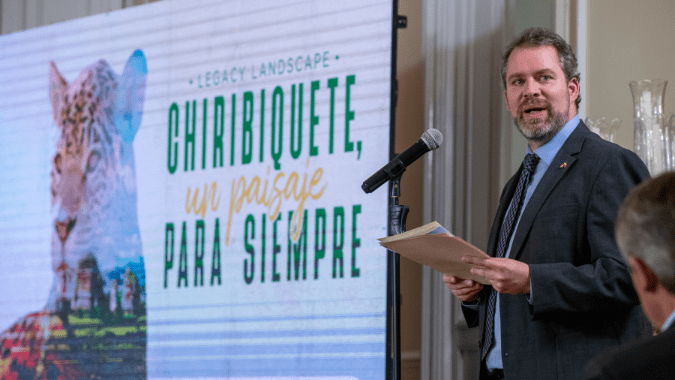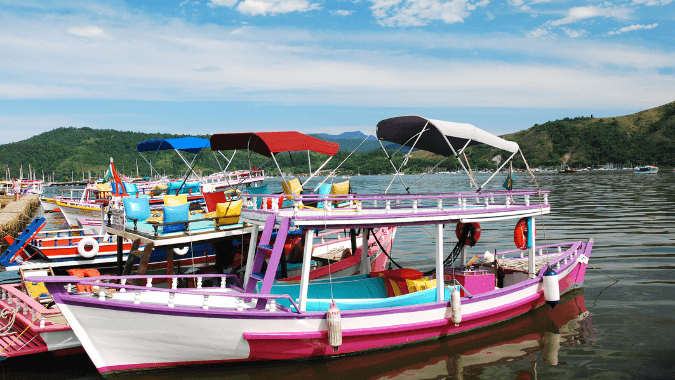The Best of South America in 2024: Tourism, Politics, and Sustainable Development
South America in 2024: A Year of Major Events, Challenges, and Opportunities
The year 2024 has been a crucial period for South America, a vibrant region that has witnessed significant cultural and sporting events, as well as important political, economic, and environmental challenges. From hosting sports tournaments that captured global attention to cultural festivals that attracted millions of visitors, and sustainable initiatives aimed at protecting some of the planet's most fragile ecosystems, each country has contributed its unique chapter to this shared story.
But not everything has been a celebration. Economic challenges, political crises, and natural phenomena have tested the region's resilience and its ability to adapt and grow. However, the South American spirit has prevailed, and tourism has once again proven to be a key driver for economic and social recovery.
In this article, we will explore the year's most significant moments, from major sporting and cultural events to sociopolitical transformations that have shaped the course of South America in 2024. Additionally, we will analyze the outlook for the coming year, with an optimistic perspective towards a 2025 full of new opportunities for travelers and lovers of this unique region.
Regional Highlights: Sports, Culture, Sustainability, and Politics
Sporting Events
In 2024, South America has been the stage for several significant sporting events that have captured international attention:
-
Copa Libertadores 2024: The most prestigious club tournament in South America concluded with the final played at the Mâs Monumental Stadium of River Plate in Buenos Aires on November 30. This was the first time the final was held as a single match in this iconic stadium, with a capacity of 84,000 spectators.
-
Paris 2024 Olympic Games: South American athletes excelled in various disciplines during the Olympic Games, held from July 26 to August 11. Their performances not only elevated the region's sports profile but also inspired future generations of athletes.
![South American athletes shone at the Paris 2024 Olympic Games, raising the region's name with historic performances Source The Best of South America in 2024: Tourism, Politics, and Sustainable Development]() South American athletes shone at the Paris 2024 Olympic Games, raising the region's name with historic performances Source
South American athletes shone at the Paris 2024 Olympic Games, raising the region's name with historic performances Source
-
Women's U-20 World Cup in Colombia: Colombia hosted the Women's U-20 World Cup between August 31 and September 22, with participation from 24 teams worldwide. This event was a significant opportunity to spotlight women's soccer and promote its development in the country.
-
South American Qualifiers for the 2026 World Cup: Throughout the year, South America's national teams competed intensely in the qualifiers, seeking to secure their place in the upcoming World Cup. Exciting matches and unexpected results kept fans on the edge of their seats.
These events have not only strengthened South America's presence on the global sports stage but also boosted tourism and the local economy, attracting thousands of visitors and generating a positive impact on host communities.
Cultural Celebrations: A Year of Traditions, Music, and Art in South America
In 2024, South America reaffirmed its position as one of the world's most vibrant cultural hubs. Through festivals, traditional celebrations, and large-scale artistic events, the region attracted millions of domestic and international visitors, consolidating its reputation as a prime cultural tourism destination.
Rio de Janeiro Carnival, Brazil: The Rio Carnival once again shone brightly this year, with over 7 million attendees, including 2 million international tourists. Samba schools paraded with dazzling floats and choreography at the Sambadrome Marquês de Sapucaí, reaffirming its status as the world's greatest spectacle.
![The Sambadrome Marquês de Sapucaí was filled with color, music, and dance during Rio Carnival 2024, an unparalleled spectacle. Source The Best of South America in 2024: Tourism, Politics, and Sustainable Development]() The Sambadrome Marquês de Sapucaí was filled with color, music, and dance during Rio Carnival 2024, an unparalleled spectacle. Source
The Sambadrome Marquês de Sapucaí was filled with color, music, and dance during Rio Carnival 2024, an unparalleled spectacle. Source
Barranquilla Carnival, Colombia: UNESCO has recognized the Barranquilla Carnival as an Intangible Cultural Heritage of Humanity, and this year it reaffirmed its importance by being named "South America's Leading Festival and Event Destination" at the World Travel Awards 2024. More than 2 million people participated in the festivities filled with traditional dances, music, and vibrant colors.
Viña del Mar International Song Festival, Chile: Held from February 25 to March 1, 2024, the most important Latin music festival brought together renowned artists such as Manuel Turizo and Alejandro Sanz, attracting millions of viewers both in person and through televised broadcasts.
National Grape Harvest Festival, Argentina: In Mendoza, the National Grape Harvest Festival celebrated the grape harvest with a series of parades, theatrical performances, and open-air musical shows. This year, the event attracted over 120,000 visitors, consolidating itself as one of Argentina's most important festivals.
Inti Raymi, Peru: The Inti Raymi festival in Cusco, also known as the "Festival of the Sun", is one of Peru's oldest and most emblematic celebrations. In its 2024 edition, it brought together over 50,000 people, including tourists and locals, in a celebration filled with symbolism and ancestral rituals.
Cartagena International Film Festival (FICCI), Colombia: The FICCI 2024 presented over 100 film productions from various parts of the world, with a special focus on Latin American cinema. The festival not only showcased films but also included workshops, discussion panels, and tributes to important figures of the seventh art.
São Paulo Biennial, Brazil: The São Paulo Art Biennial stood out this year for its focus on sustainable art and its relationship with the environment. The Biennial included exhibitions from local and international artists addressing social and ecological themes.
Sustainability and Responsible Tourism: Conservation, Challenges, and Hope for the Future
South America, home to unmatched biodiversity, continues to face significant environmental challenges. However, the year 2024 has shown that sustainable tourism and conservation policies are key tools to protect its natural resources while simultaneously strengthening local economies.
Forest Fires: A Persistent Challenge
Forest fires continued to be a critical environmental challenge in 2024, with Chile and the Brazilian Amazon being two of the most affected regions.
-
In Chile, fires devastated over 450,000 hectares of forests, primarily in the regions of Biobío and La Araucanía, forcing the temporary closure of important national parks such as Torres del Paine. Authorities implemented new prevention and rapid response protocols, along with campaigns to educate tourists and locals about responsible practices.
!["Forest fires in Chile posed an environmental challenge in 2024, with intense efforts to protect affected national parks." Source The Best of South America in 2024: Tourism, Politics, and Sustainable Development]() "Forest fires in Chile posed an environmental challenge in 2024, with intense efforts to protect affected national parks." Source
"Forest fires in Chile posed an environmental challenge in 2024, with intense efforts to protect affected national parks." Source
-
In Brazil, deforestation and intentional fires continued to affect the Legal Amazon. In response, the government launched an ambitious plan called "Tourism with Positive Impact", aimed at regulating tourism activities in vulnerable areas and reducing visitors' carbon footprints.
Sustainable Tourism: Initiatives That Make a Difference
Sustainable tourism continues to gain traction in the region, with innovative programs that aim to balance economic growth with environmental preservation.
-
Ecuador: The Galápagos Islands, one of the world's most fragile ecosystems, expanded their protected areas to curb the impacts of mass tourism. Additionally, authorities implemented a system of daily visitor quotas and increased controls to reduce pollution and damage to coral reefs.
-
Argentina: In Patagonia, the government launched the "One Tree per Trip" program, aiming to plant more than 1 million native trees in national parks affected by fires and unregulated tourism. This initiative seeks to offset visitors' carbon emissions.
-
Peru: In Machu Picchu, the government implemented new access restrictions to protect archaeological heritage. Additionally, alternative trekking routes, such as the Alternative Inca Trail, were promoted with limited quotas and strict rules for tour operators.
-
Colombia: The implementation of peace agreements enabled the opening of new tourist routes in previously inaccessible regions, such as the Chiribiquete National Park. Community tourism programs were promoted, where local communities play a leading role in managing tourism experiences.
!["Community tourism in regions like Chiribiquete allows local communities to lead sustainable initiatives." Source The Best of South America in 2024: Tourism, Politics, and Sustainable Development]() "Community tourism in regions like Chiribiquete allows local communities to lead sustainable initiatives." Source
"Community tourism in regions like Chiribiquete allows local communities to lead sustainable initiatives." Source
A Green Future for South America
Despite challenges, South America remains a pioneer in environmental conservation and sustainable tourism. The path has not been easy, but the initiatives implemented this year serve as a reminder that balancing economic development and environmental care is possible.
For travelers, the message is clear: visiting South America is not only an unforgettable experience but also an opportunity to be part of the change towards a greener and more responsible future.
Sociopolitical Overview: A Year of Change, Challenges, and Opportunities
The year 2024 has been marked by a series of political and economic changes in South America, which have had both direct and indirect impacts on the tourism industry. From economic reforms aimed at stabilizing inflation-hit economies to environmental policies and peace agreements, each country has followed its own path, but with one constant: the pursuit of stability and sustainable development.
Argentina: Economic Adjustments and Their Impact on Tourism
The rise to power of Javier Milei in December 2023 brought with it a package of radical economic reforms, including measures such as the removal of currency controls and cuts in public spending. While these policies aim to stabilize Argentina's economy and attract foreign investment, their impact on tourism was immediate.
In the tourism sector, the country experienced a decline in inbound tourism, with a cumulative drop of 4% in international tourist arrivals during the first nine months of the year compared to 2023. Factors such as inflation, exchange rate volatility, and decreased purchasing power among foreign tourists affected the country's competitiveness as a tourist destination.
!["The economic reforms implemented in Argentina in 2024 directly impacted the country's tourism industry." Source The Best of South America in 2024: Tourism, Politics, and Sustainable Development]() "The economic reforms implemented in Argentina in 2024 directly impacted the country's tourism industry." Source
"The economic reforms implemented in Argentina in 2024 directly impacted the country's tourism industry." Source
Brazil: Social Policy and Ecological Tourism
Under the administration of Luiz Inácio Lula da Silva, Brazil continued implementing social and economic policies focused on reducing inequality and promoting sustainable tourism.
- Ecological tourism: Tourism in the Pantanal and the Amazon has been strengthened with environmental preservation programs and measures to control mass tourism.
- Stable economy: Despite moderate inflation, Brazil closed 2024 with an economic growth rate of 2.4%, driven mainly by domestic tourism and agricultural exports.
Chile: Environmental and Political Challenges
Chile faced a year marked by the environmental crisis caused by forest fires and ongoing political instability following mid-year municipal elections.
- Environmental reforms: The government implemented new protocols to address fires and protect the most visited national parks, such as Torres del Paine and San Pedro de Atacama.
- Political stability: Although tensions arose during local elections, overall stability allowed tourism to recover slowly during the second half of 2024.
- Economic Stability: Peru closed 2024 with an inflation rate of 1.8%, the lowest in South America, which has boosted confidence among tourism investors.
- Tourism Diversification: Alternative routes such as the Alternative Inca Trail and community tourism in the Arequipa region were promoted.
Colombia: Peace and New Tourism Routes
Colombia continues its process of consolidating peace agreements, which has allowed the opening of new regions to tourism, especially in natural areas previously inaccessible due to armed conflict.
- Tourism in Post-Conflict Regions: Areas such as the Chiribiquete National Park and Caquetá have begun to welcome tourists interested in ecotourism and biodiversity.
- Cultural Events: The Barranquilla Carnival and the Cartagena International Film Festival have been essential in positioning Colombia as a top-tier cultural destination.
Ecuador: Tourism and Sustainability
Ecuador has managed to maintain its tourism appeal despite economic challenges. The Galápagos Islands remain the star destination, with a clear focus on environmental sustainability.
- Environmental Protection: Protected areas have been expanded, and strict controls have been implemented to reduce the impact of mass tourism.
- Community Tourism: Regions such as Otavalo and Baños de Agua Santa have strengthened tourism based on community participation.
Outlook for South America in 2025
The year 2025 presents a period of opportunities and challenges for South America, with a vision encompassing economic growth, tourism recovery, and addressing environmental and sociopolitical issues that continue to impact the region.
1. Gradual Economic Recovery
Moderate regional GDP growth is expected, driven by the stabilization of key economies and the gradual recovery of strategic sectors such as tourism, raw material exports, and the technology industry. However, the region will continue to face challenges related to inflation, social inequality, and political uncertainty in some countries.
In this context, tourism will continue to play a crucial role as a source of income and employment, with sustained growth projections as countries strengthen their strategies to attract international visitors.
2. Sustainable Tourism as a Fundamental Pillar
Sustainable tourism will continue to gain prominence on the regional agenda, with initiatives focused on conserving key ecosystems, empowering local communities, and reducing the carbon footprint of tourism activities.
Destinations such as the Brazilian Amazon, the Patagonian glaciers, and the Galápagos Islands in Ecuador will remain global benchmarks in sustainable practices. Additionally, an increase in interest in community and ecological tourism experiences is anticipated.
3. Innovation and Digitalization in the Tourism Industry
The use of digital technologies will continue to revolutionize the tourism experience in South America. Smart booking platforms, virtual assistants, mobile applications, and digital payment systems will facilitate real-time access to information and enhance the traveler's experience.
Furthermore, tools such as artificial intelligence (AI) and augmented reality (AR) will become more deeply integrated into tourism services, enabling a more personalized and interactive experience.
!["Digitalization and artificial intelligence will revolutionize the tourism experience in the region." Hasbleidy The Best of South America in 2024: Tourism, Politics, and Sustainable Development]() "Digitalization and artificial intelligence will revolutionize the tourism experience in the region." Hasbleidy
"Digitalization and artificial intelligence will revolutionize the tourism experience in the region." Hasbleidy
4. International Events and Cultural Attractions
South America will continue to be a vibrant stage for sporting, cultural, and artistic events with global impact. Iconic festivals such as the Rio Carnival, the Barranquilla Carnival, and the National Grape Harvest Festival in Mendoza will continue to draw crowds of visitors.
Additionally, cities like Buenos Aires, Lima, and Bogotá will solidify their status as cultural and gastronomic hubs offering unique experiences to tourists.
5. Sociopolitical Challenges and Their Impact on Tourism
Political and economic instability will remain a challenge in several South American countries. Economic reforms, social tensions, and changes in public policies will directly influence international tourists' perceptions of safety and confidence.
Regional collaboration and greater political stability will be key to fostering an environment conducive to tourism and foreign investment.
Conclusion: South America, a Continent in Motion
The year 2024 has been a key year for South America, marked by a combination of challenges and achievements that have shaped its tourism, cultural, economic, and political landscape. From vibrant cultural festivals to environmental challenges and political transformations, each country has left a unique mark on this chapter of its history.
Tourism, as an economic and cultural engine, has once again demonstrated its ability to unite people, generate income, and strengthen local identities. Sporting events like the Copa América and iconic celebrations such as the Rio Carnival and the Barranquilla Carnival have acted as global meeting points, attracting millions of visitors and leaving a positive impact on local economies.
In short, South America remains a vibrant continent, diverse and full of opportunities for travelers worldwide.
Plan Your South American Adventure with Daytours4u!
If this journey through the highlights of South America in 2024 has inspired you, don't wait any longer to experience it firsthand. With Daytours4u, you'll find the best experiences, expert local guides, and high-quality service to make your trip unique.
Book now and discover the best of Daytours4u. Your next adventure awaits!
See you in 2025 with more stories, destinations, and adventures to discover!
By: Carolina Ferere, content editor for Daytours4u.com.

 South American athletes shone at the Paris 2024 Olympic Games, raising the region's name with historic performances
South American athletes shone at the Paris 2024 Olympic Games, raising the region's name with historic performances  The Sambadrome Marquês de Sapucaí was filled with color, music, and dance during Rio Carnival 2024, an unparalleled spectacle.
The Sambadrome Marquês de Sapucaí was filled with color, music, and dance during Rio Carnival 2024, an unparalleled spectacle.  "Forest fires in Chile posed an environmental challenge in 2024, with intense efforts to protect affected national parks."
"Forest fires in Chile posed an environmental challenge in 2024, with intense efforts to protect affected national parks."  "Community tourism in regions like Chiribiquete allows local communities to lead sustainable initiatives."
"Community tourism in regions like Chiribiquete allows local communities to lead sustainable initiatives."  "The economic reforms implemented in Argentina in 2024 directly impacted the country's tourism industry."
"The economic reforms implemented in Argentina in 2024 directly impacted the country's tourism industry."  "Digitalization and artificial intelligence will revolutionize the tourism experience in the region." Hasbleidy
"Digitalization and artificial intelligence will revolutionize the tourism experience in the region." Hasbleidy

